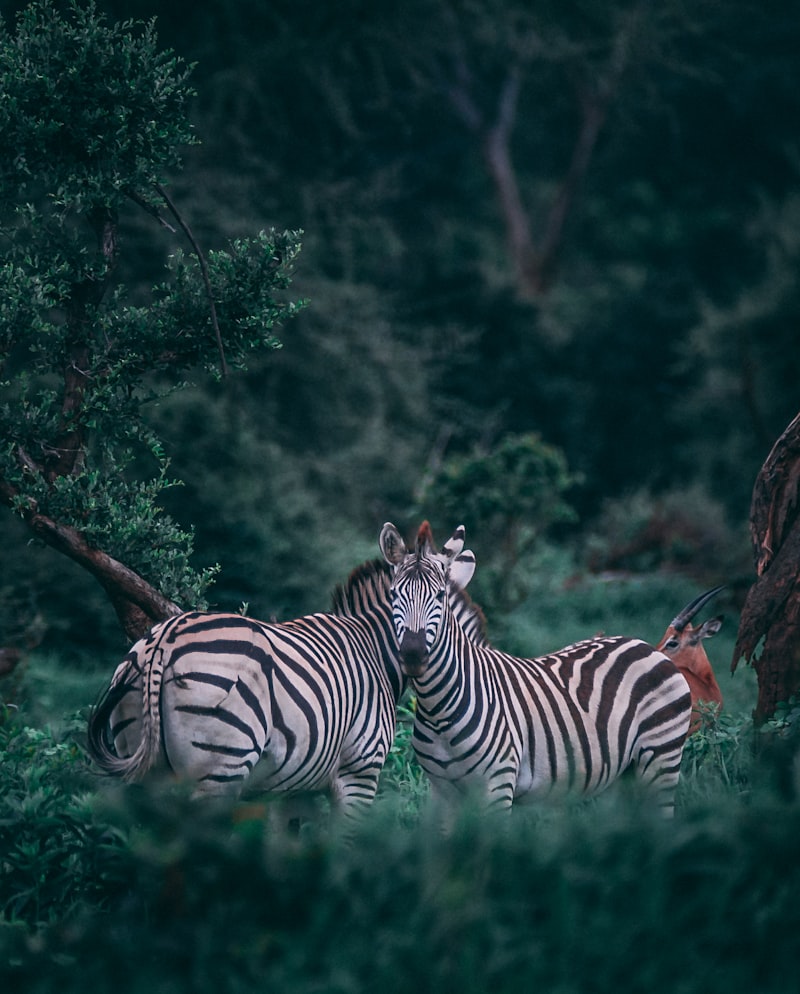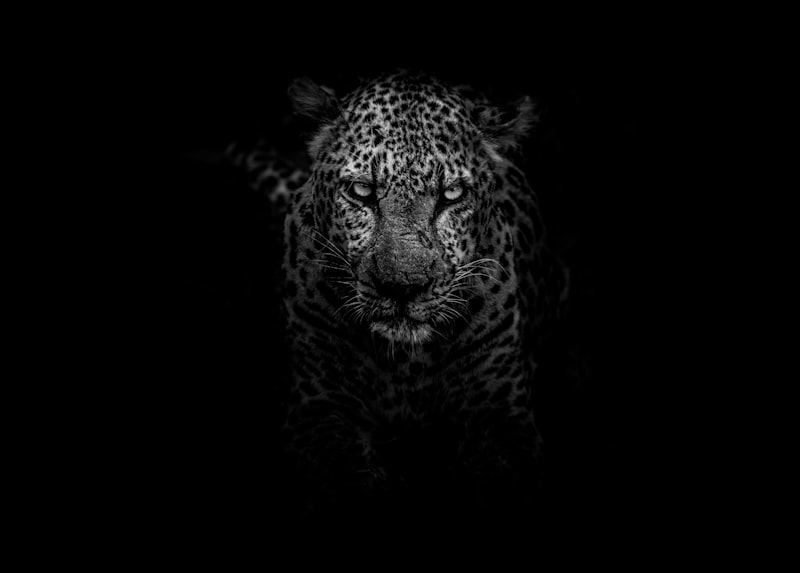Picture a dense forest where various species of birds, each with distinct colors and songs, fill the air. Their genetic diversity allows some to withstand harsh winters, while others thrive in warmer climates. This variability isn’t random; it’s the result of millennia of adaptation and evolution, where genes passed down through generations offer solutions to ecological puzzles.
Take the African savanna, where lions reign as apex predators. Their genetic diversity isn’t merely about physical traits but also about immune responses to diseases and parasites that lurk in the landscape. Some lions may carry genes that confer resistance to specific illnesses, ensuring the survival of their pride during outbreaks.
In the depths of the ocean, coral reefs bloom with a kaleidoscope of colors. Each coral’s genetic diversity influences its ability to withstand rising sea temperatures or pollution levels. It’s a delicate balance where diversity equals resilience—the more genetic options available, the better the chances of survival for these fragile ecosystems.
Back on land, consider the plight of endangered species like the black rhino. Their dwindling numbers highlight the importance of genetic diversity in conservation efforts. Breeding programs carefully select individuals to maximize diversity, aiming to preserve as many unique genetic traits as possible to ensure future generations can adapt to changing habitats.
Genetic diversity in wildlife populations isn’t just a scientific concept; it’s a lifeline. It’s the secret to how species endure, evolve, and astonish us with their ability to thrive against all odds.
Exploring the Impact of Genetic Diversity on Wildlife Resilience in Changing Environments
In simple terms, genetic diversity refers to the variety of genes within a species. Just like a toolbox with many different tools, genetic diversity gives species the ability to adapt and survive in various conditions. This diversity is not just about survival; it’s about thriving. When the environment throws a curveball, species with diverse genetic backgrounds have a better chance of having individuals who can weather the storm.
Take, for example, a population of birds facing a sudden change in climate. Some birds may have genes that make them more tolerant to heat, while others might have genes for finding new food sources. When the environment shifts, these different genetic traits become incredibly valuable. They allow some birds to survive and reproduce, passing on their advantageous genes to the next generation.

But why does this matter so much? Imagine a world where every individual in a species is almost identical genetically. If a new disease strikes or the climate shifts dramatically, the entire population could be at risk. This lack of genetic diversity means fewer options for adaptation and resilience.
In contrast, species with high genetic diversity act like a diverse team ready to tackle any challenge. It’s not just about individuals; it’s about the collective strength of the gene pool. By ensuring a mix of genes, wildlife can maintain healthy populations and adapt to changing environments over time.
Scientists study genetic diversity to understand which species are more vulnerable and which are more likely to thrive. By conserving habitats and protecting diverse populations, we can safeguard wildlife against the uncertainties of the future.
Genetic diversity isn’t just a scientific concept; it’s a lifeline for wildlife. It’s the difference between a species surviving or fading away in the face of environmental change. As we continue to explore and understand its impact, we discover more about the incredible resilience of the natural world.
How Genetic Diversity Shapes the Survival Strategies of Wildlife Species
In the wild, genetic diversity refers to the variety of genes within a species. Think of it as having a wide toolkit of traits that can help animals adapt to changing environments, fight diseases, and even cope with natural disasters. Take cheetahs, for instance. Despite their grace and speed, their genetic pool is surprisingly narrow. This lack of diversity makes them vulnerable to diseases and limits their ability to adapt to new challenges.
On the flip side, species with rich genetic diversity, like wolves or elephants, have a better chance of survival. They can weather environmental changes because they have a broader range of traits to draw upon. It’s like having a diverse group of friends—someone’s always got a solution to every problem.
Genetic diversity also plays a crucial role in the long-term health of ecosystems. Picture a forest full of trees. If all the trees were of the same species and a disease struck, it could wipe out the entire forest. But if there’s a variety of tree species, some might be resistant, ensuring the forest survives. The same principle applies to wildlife populations—they need genetic diversity to thrive, not just survive.
Genetic diversity isn’t just a scientific concept—it’s a lifeline for wildlife. It’s what keeps species adaptable, resilient, and capable of facing whatever challenges come their way. So next time you marvel at the wonders of nature, remember that genetic diversity is the unsung hero behind every species’ survival story.
The Role of Genetic Variation in Enhancing Adaptation among Wildlife Populations
Let’s break it down: genetic variation refers to the range of genetic traits within a species. These traits can include things like fur color, size, resistance to diseases, and even behaviors like hunting strategies. Think of it as having a toolbox filled with all sorts of tools; the more tools you have, the better equipped you are to handle various tasks.
Now, why does this matter in the wild? Picture a population of deer facing a sudden change in climate. Some deer might have genes that make them more tolerant to colder temperatures, while others might be better at finding alternative food sources. This diversity means that even if the environment changes, there’s a higher chance that some individuals will survive and pass on their resilient genes to the next generation.

But it’s not just about surviving day-to-day challenges. Genetic variation also helps wildlife populations adapt over generations. Through processes like natural selection, where individuals with beneficial traits are more likely to survive and reproduce, these populations gradually become better suited to their environments. It’s like a continuous upgrade—nature’s way of fine-tuning species to thrive in specific conditions.
Take the iconic example of Darwin’s finches in the Galápagos Islands. These birds vary in beak size and shape, allowing different species to specialize in feeding on different foods like seeds or insects. Over time, this diversity has helped them occupy various ecological niches across the islands, showcasing the power of genetic adaptation.
Unraveling the Genetic Secrets: Diversity Patterns in Global Wildlife Species
Have you ever wondered about the astonishing diversity found in wildlife across the globe? It’s truly remarkable how each species, from the mighty Bengal tiger to the tiny poison dart frog of the Amazon rainforest, holds a unique genetic code that shapes its appearance, behavior, and survival strategies. Understanding these genetic secrets not only fascinates scientists but also opens doors to conservation efforts crucial for preserving our planet’s biodiversity.
Every species, whether living in the depths of the ocean or soaring high above in the skies, carries a genetic blueprint that dictates its traits. This blueprint, encoded in DNA, determines everything from an animal’s coat color to its ability to adapt to changing environments. Take the cheetah, for example, known for its incredible speed. Its genetic makeup enables it to reach speeds of up to 60 miles per hour in seconds, a marvel of evolution honed over millennia.
Diversity among wildlife species isn’t just about physical differences; it’s also about genetic variation. This variation is essential for species survival, allowing them to adapt to new habitats, fend off diseases, and respond to environmental changes such as climate shifts or human encroachment. Think of it as a vast library where each genetic variation represents a unique book, contributing to the overall resilience and adaptability of a species.
But why does genetic diversity matter on a global scale? Imagine a world where only a single type of bird exists, or where all tigers look and behave exactly alike. Loss of genetic diversity increases the risk of extinction and reduces the ability of species to recover from threats like habitat destruction or pollution. It’s akin to having fewer tools in a toolbox when facing a complex problem – the fewer options we have, the harder it becomes to find solutions.
In the quest to unravel these genetic secrets, scientists employ advanced technologies like DNA sequencing and genetic mapping. These tools allow them to peer into the intricate molecular world of wildlife, revealing hidden patterns and connections that span continents and millennia. Each discovery adds another piece to the puzzle of how life on Earth has evolved and continues to adapt.
As we delve deeper into understanding genetic diversity in global wildlife species, we not only marvel at nature’s ingenuity but also recognize our role in safeguarding these precious genetic treasures for future generations. By protecting habitats, reducing pollution, and supporting conservation efforts, we can ensure that the tapestry of life remains vibrant and resilient for years to come.
Frequently Asked Questions
How do scientists measure genetic diversity in wildlife?
Learn how scientists measure genetic diversity in wildlife, exploring methods like DNA sequencing and microsatellite analysis to assess variations within species. These techniques help researchers understand population health, adaptation potential, and conservation strategies.
How does genetic diversity affect the health and resilience of wildlife populations?
Genetic diversity enhances the health and resilience of wildlife populations by increasing their ability to adapt to environmental changes and resist diseases. A wider gene pool provides a better chance for species to survive threats such as habitat loss or climate shifts.
What is genetic diversity and why is it important for wildlife populations?
Discover why genetic diversity is crucial for wildlife populations. Learn how it enhances resilience to diseases, adaptability to environmental changes, and ensures long-term survival of species.
What are the threats to genetic diversity in wildlife populations?
Learn about threats to genetic diversity in wildlife populations, including habitat loss, fragmentation, pollution, climate change, overexploitation, and invasive species. Understand how these factors can lead to reduced gene pool diversity, making species more vulnerable to diseases and environmental changes.
What conservation strategies help preserve genetic diversity in wildlife populations?
Discover effective conservation strategies that safeguard genetic diversity in wildlife populations. Learn about habitat preservation, captive breeding programs, genetic monitoring, and promoting natural mating behaviors among endangered species.


